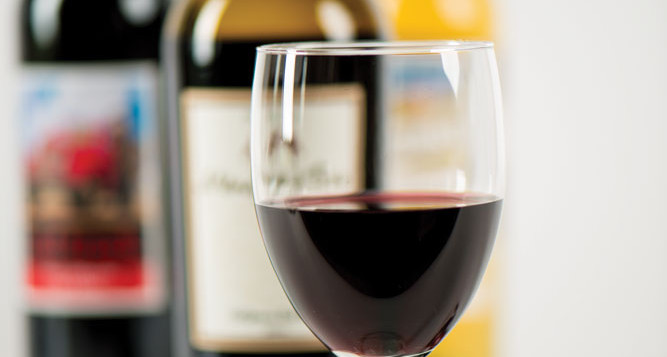By Bob Lipinski
Zinfandel is a classic all-American grape variety, planted in virtually all of California’s grape-growing areas. It is a thin-skinned, medium acid red grape variety with a mysterious past, which has been grown throughout California for over 150 years. For decades it was believed that Agoston Haraszthy, from Hungary, often wrongly identified to as the “Father of American Viticulture,” was responsible for bringing the Zinfandel grape from Hungary to the United States in the mid-1860s. However, our search begins some 30 years earlier with William Robert Prince (1795-1869), a nurseryman and grandson of Robert Prince, who operated the Linnaean Botanical Gardens in Flushing, Queens, New York. In his time, he had the largest collection of Vitis vinifera grape varieties in America. He experimented with many varieties of grapes and offered Zinfandel, a red grape variety of unknown origin, in his 1830 catalog, listed as Black St. Peters.
In 1967, Austin C. Goheen, a U.S. Department of Agriculture plant pathologist, discovered the similarity of the Italian grape known as Primitivo and Zinfandel while in Bari, Italy. Italian researchers determined the Primitivo grape has been grown in Apulia since the late 1700s. The enzyme patterns of Primitivo were electronically compared with those of Zinfandel and found to be identical. In 1976 at the University of California, Davis, scientist Wade Wolfe tested both varieties by the isozyme fingerprinting technique and determined them to be the same. That led researchers to Croatia, where many in the agricultural field were convinced that Zinfandel was the same grape variety as the local Plavac Mali. In Croatian, plavo means blue and mali means small. After further DNA analysis, it was revealed that Plavac Mali was not related to Zinfandel, but in fact it is a cross between Tribidrag and Dobričić. However, while the researchers were in Croatia, they heard stories about another indigenous grape that may, in fact, be the key to unlock Zinfandel’s mystery.
In 2001, it was confirmed through DNA analysis that Zinfandel and an indigenous Croatian grape called Crljenak Kastelanski are the same. Further DNA analysis determined that Plavac Mali is a cross between Tribidrag and Dobričić. It was also determined that Tribidrag is the oldest known Croatian name for the Crljenak Kastelanski grape variety, which appears in print as early as 1518.
George West from Massachusetts made California’s first White Zinfandel at the El Pinal Winery near Stockton, California, in 1869; the first varietally labeled Zinfandel was made in 1944 by the Parducci Winery; and the first rosé Zinfandel was introduced in 1955 by Pedroncelli Winery. Sutter Home was the winery that defined and popularized the White Zinfandel category and craze in the early 1970s. The first rosé made in the United States was made by Almaden Vineyards in 1941, with their Grenache Rosé, a sweetish pink wine. Blush wine was first used in 1976 by Charlie Kreck, owner of the Mill Creek Winery, later trademarked in 1981.
A small amount of Zinfandel is also grown in Australia, Israel, Italy, New Zealand, and South Africa.
Zinfandel is also known as Black St. Peters, Black Zinfandel, and Zin (United States), Kratosija (Montenegro), Primitivo (Italy), Crljenak Kastelanski and Tribidrag (Croatia).
The Zinfandel grapes history is not only fascinating but ponder this… winemakers can produce a White Zinfandel, Rosé Zinfandel, Red Zinfandel, Sparkling Zinfandel, Late-Harvest Zinfandel, and Port Wine Zinfandel.
A few recommended Zinfandel wines I recently tasted…
2015 Ravenswood “Dickerson,” Napa Valley
2015 Pedroncelli “Bushnell Vineyards,” Dry Creek
2014 Pedroncelli “Mother Clone,” Dry Creek
2017 Pedroncelli “Dry Rosé of Zinfandel,” Dry Creek
2016 Kreck “Teldeschi Vineyards,” Dry Creek
2016 Kreck “Del Barba Vineyard,” Contra Costa
2015 Kunde Estate Zinfandel, Sonoma Valley
2015 Kunde Reserve Century Vines, Sonoma Valley
“What is the definition of a good wine? It should start and end with a smile.” —William Sokolin
Bob Lipinski is the author of 10 books, including “101: Everything You Need To Know About Whiskey” and “Italian Wine & Cheese Made Simple” (available on Amazon.com). He consults and conducts training seminars on Wine, Spirits, and Food and is available for speaking engagements. He can be reached at www.boblipinski.com OR bkjm@hotmail.com


 Bob Lipinski, author of 10 books; writes, consults, and conducts training seminars on Wine, Spirits, and Food and is available for speaking engagements.
Bob Lipinski, author of 10 books; writes, consults, and conducts training seminars on Wine, Spirits, and Food and is available for speaking engagements.
Recent Comments